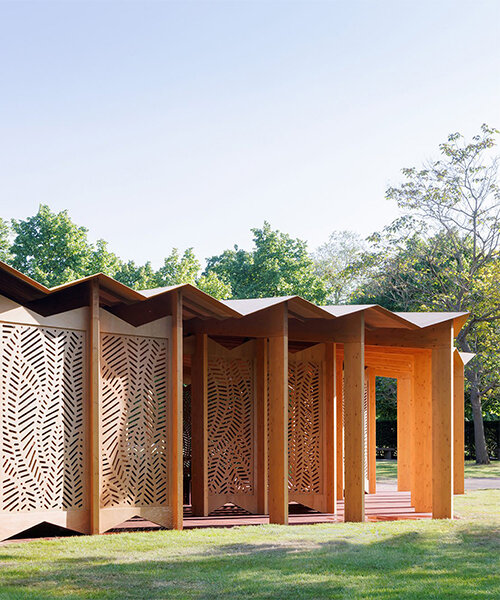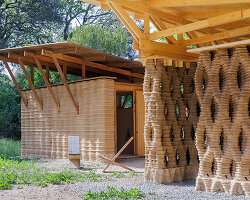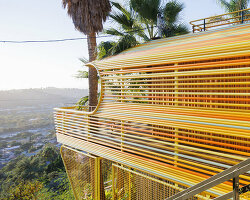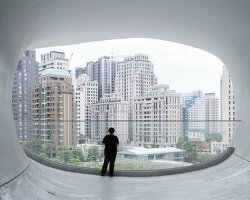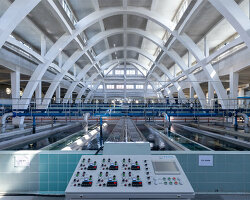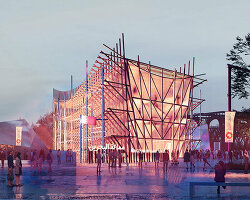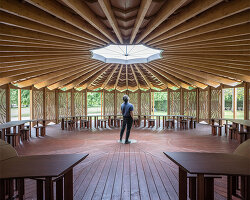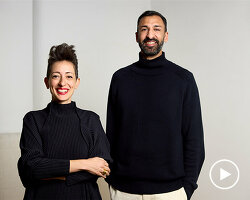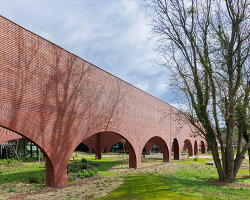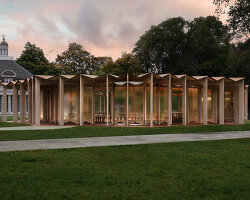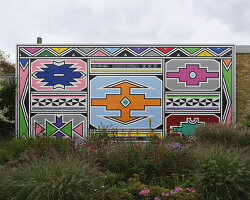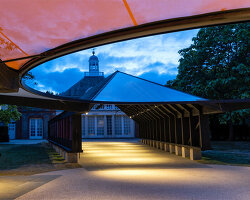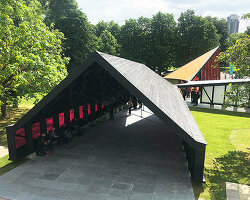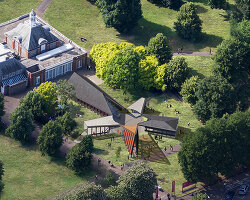introducing ‘À table’ – Serpentine Pavilion 2023 by Lina Ghotmeh
Lebanese-born architect Lina Ghotmeh has been selected to design the 22nd Serpentine Pavilion, currently being constructed in Kensington Gardens. Named ‘À table,’ the Serpentine Pavilion 2023 by Lina Ghotmeh, invites visitors to gather and sit down together, engage in dialogue and share a meal. The project draws inspiration from Ghotmeh’s Mediterranean heritage and the meaningful conversations that take place around a table, embodying the desire to establish a sustainable connection with the land through food and our innate bond with the Earth.
At the heart of the pavilion lies a circular table, encouraging us to gather, reflect, exchange thoughts, and forge new relationships. Recognizing food as a form of care, the design of the pavilion serves as a space for contemplation and introspection, prompting us to reconsider our relationship with the environment and nature. By creating a convivial setting around the table, the architect invites us to share our ideas, concerns, joys, responsibilities, traditions, cultural memories, and histories, fostering a sense of unity and connection. ”À table’ represents the return to something very rudimentary and primitive: the act of bringing everyone around the same table, the table where we eat, where we share.’ mentions Ghotmeh. To gain a comprehensive understanding of the design, inspiration, and symbolism behind this year’s Serpentine Pavilion, designboom spoke with the Paris-based architect. Read the interview in full below.
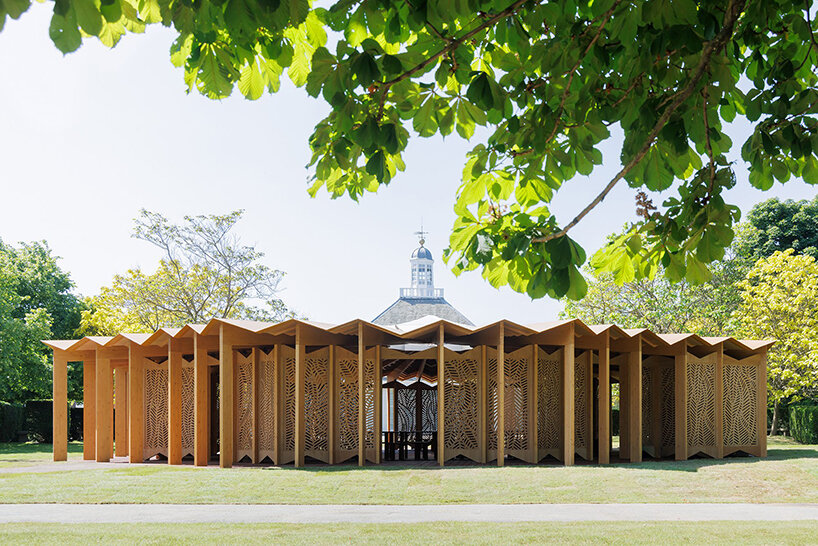
Serpentine Pavilion 2023 designed by Lina Ghotmeh. © Lina Ghotmeh — Architecture. Photo: Iwan Baan, Courtesy: Serpentine.
interview with Lina Ghotmeh
designboom (DB): Can you briefly introduce ‘À table’ to us? What was the inspiration behind the design for this year’s Serpentine Pavilion?
Lina Ghotmeh (LG): I named the Pavilion ‘À table’, which is this call to get together around the same table. It represents going back to the source, to something very rudimentary and primitive: bringing everyone around the same table, the table where we eat, where we share. It’s where sometimes we decide on important matters, related to our society. It’s also about the moment of how we actually eat. Because, if we change the way we eat, we change our relationship to Earth as well. So, I wanted to start with this thought.
DB: How does your ‘Archaeology of the Future’ concept come into play in this particular design? How does the Pavilion incorporate historical influences into its essence?
LG: Part of the design process that I lead in my atelier is about researching and trying to build a memory for a project that doesn’t just emerge as an alien to its site, but tries to incorporate notions of history, of society, of our evolution. So, we started looking at what a pavilion is, what a folly in a park is, and how these follies have evolved as these kinds of open structures with colonnades. We also looked at moments of assembly in different cultures, for example, the notion of the symposium, where Greek people used to sit at tables, eat, and decide at the same time, around a feast. We looked at the structures of the Dogon people, where the elderly of the villages used to all meet under this roof, stay seated, and embark on a decision. I think that this approach, the ‘Archaeology of the Future,’ brings one to think about a history of references that sometimes are distant.
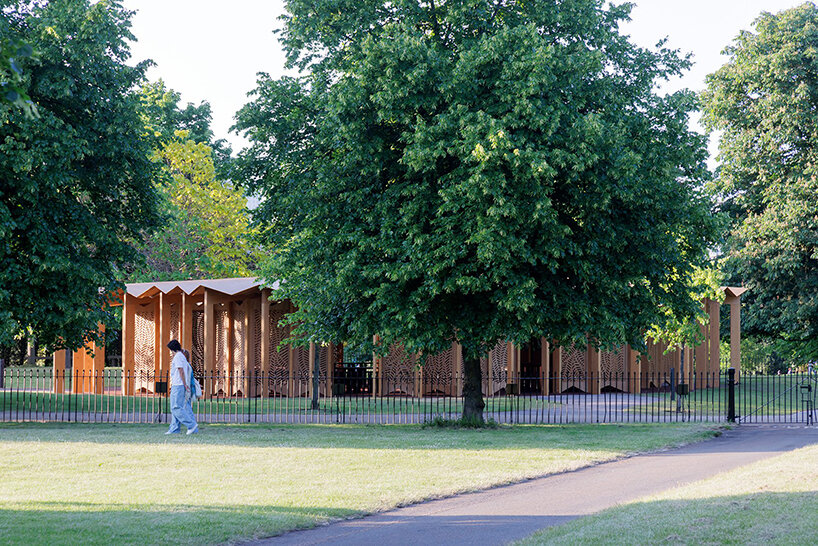
Serpentine Pavilion 2023 designed by Lina Ghotmeh. © Lina Ghotmeh — Architecture. Photo: Iwan Baan, Courtesy: Serpentine.
DB: Can you walk us through the spatial experience of the Pavilion?
Another thought that shapes the design of the Pavilion is understanding of the environment in which I am intervening, allowing it to emerge organically from its surroundings. It is not some object that is positioned there, but it emerges from the resources of the place.
The first thing that one can think about is the material itself. It’s constructed in wood, it echoes the tree trunks, and it’s a natural bio-sourced material. The Pavilion deploys itself as a series of tree trunks that invite one to enter into the heart of what could be a forest, maybe. As you walk around in the concave form of this Pavilion, you start to be aware of the canopies of the trees that envelop and surround the Pavilion. The design incorporates a gradation of experiences, creating a porous transition from the outside to the inside. The outer gallery space is more open, it’s a walkway where kids could run — a space with an almost kaleidoscopic feel to it. So, as you would walk around, you first experience the outside, rather than the interiority.
The tree trunks shield you from the rain of London, and then from there, you can enter into the more inner heart of the Pavilion, which offers an intimate interior experience. Within the interior, one discovers a split structure that echoes natural forms like the structures of leaves. The repetition of beams, and the secondary elements that brace them, makes you almost feel like you are under a large leaf or a mushroom. You are invited to contemplate, walk around, sit around the table, meet your neighbors, discuss with friends, and have a café. You are invited to really use the space and not simply just look at it. So, the design provides a progression of experiences, from contemplation to functional use, aiming to create a warm and inviting atmosphere within the park’s context.
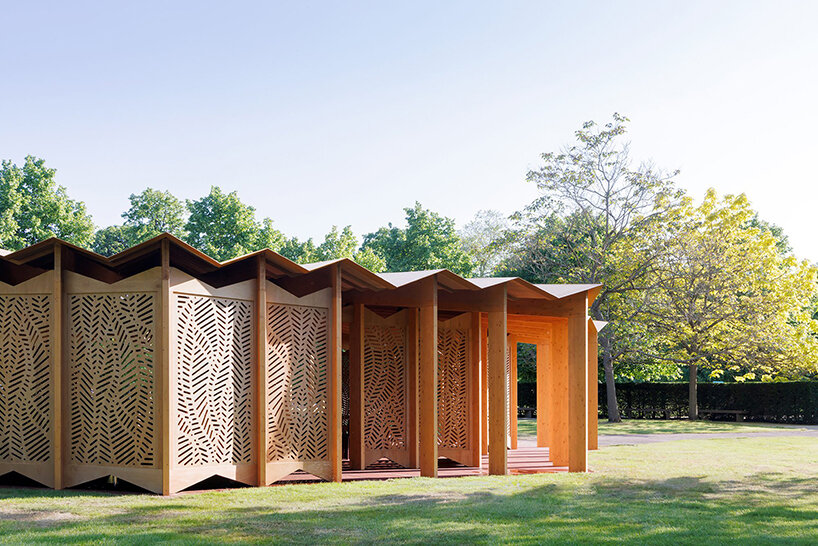
Serpentine Pavilion 2023 designed by Lina Ghotmeh. © Lina Ghotmeh — Architecture. Photo: Iwan Baan, Courtesy: Serpentine.
DB: You mentioned the roof of the Pavilion, which draws inspiration from a leaf, and is a quite distinctive element in the design. Can you elaborate on this pleated roof and its significance?
LG: The pavilion has this horizontality that looks like a landscape. It is not an object that sits there and tries to dominate the site. It really merges with the site, still allowing the gallery space of the Serpentine to be hovering around. The roof is what gathers us, inviting us to come together: you are shielded, and you are connected to your surroundings.
The idea was to create this pleated structure as if you took a piece of paper and you just unfolded it. The design generates that very feeling of horizontality, but it also gives it a certain specificity and a relationship to light. Unlike a flat surface, the pleats allow light to enter and interact with the Pavilion in a unique manner. As I mentioned earlier, the shape draws from the leaf of a tree. When you look at a leaf, there’s this arrangement of structures —main and secondary— that hold this magical quality. Learning from this and trying to reapply it into the architecture, I aimed to advocate for simplicity and emotion, a design that does not have to talk too much, really. It is present in its own way.
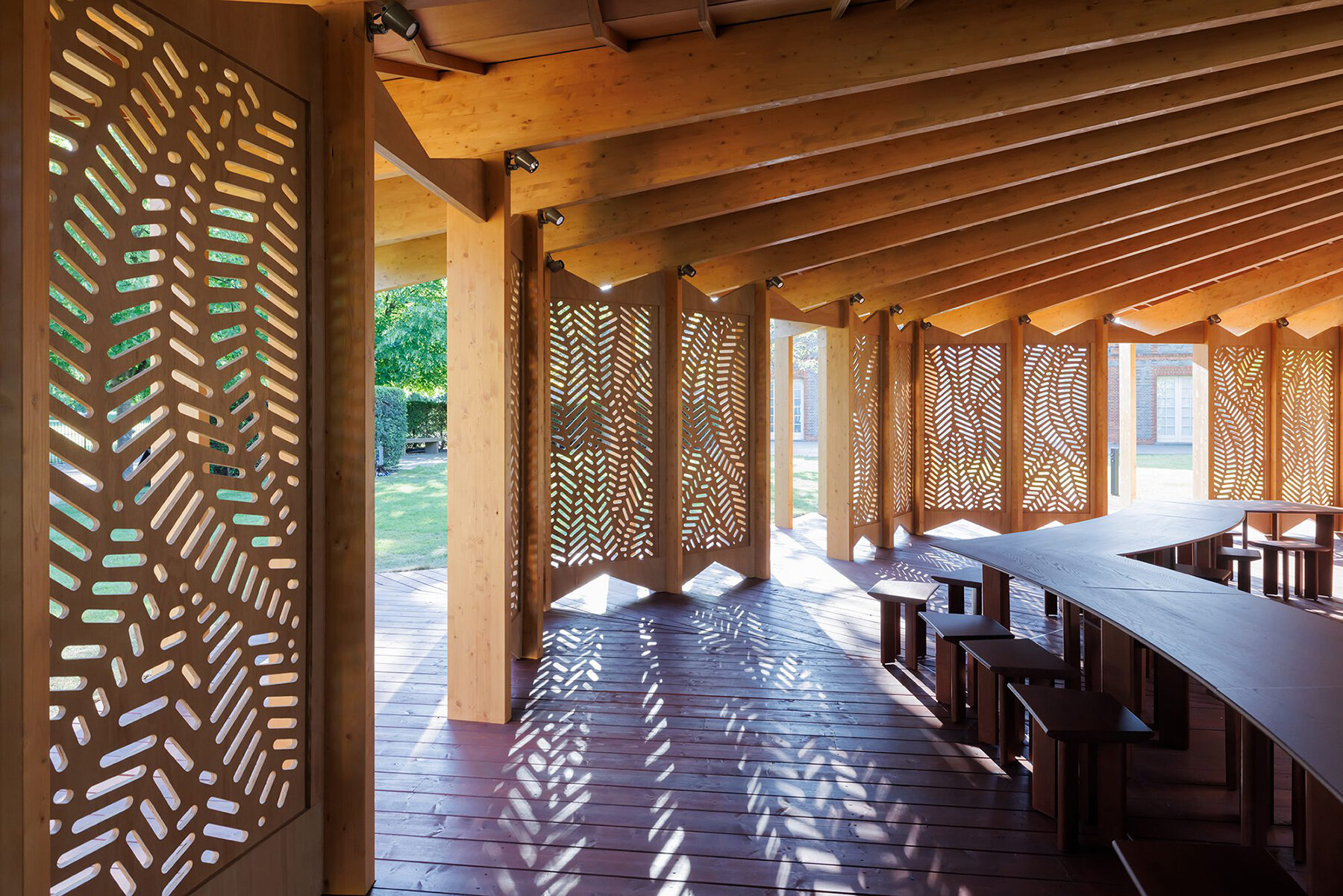
Serpentine Pavilion 2023 designed by Lina Ghotmeh. © Lina Ghotmeh — Architecture. Photo: Iwan Baan, Courtesy: Serpentine
DB: Why is it essential for the Pavilion to be in harmony with its natural surroundings?
LG: I think it’s a must. It’s not even a design approach or a concept; it’s a responsibility we have to the earth and to humanity. We need to be as conscious as possible about the environment and the current problems of climate change. If architecture is to be meaningful, it must have as little impact on the environment as possible.
Building with wood means building lightweight structures that are easier to assemble and reduce the carbon footprint associated with construction. By using this method, we draw attention to the importance of nature and acknowledge that we are an integral part of it. Nature is not separate from humans, we are part of nature, and we are almost all microbes. So the world can not be human-centric, we need to live more in harmony with the environment if we really want to live better too. We need nature to survive. Nature will always survive with its earthly wonders, but we need to stay close to nature to survive, learn from it, and understand ourselves. Of course, architecture cannot have the response to all that, but it can contribute and raise awareness, and create a dialogue.
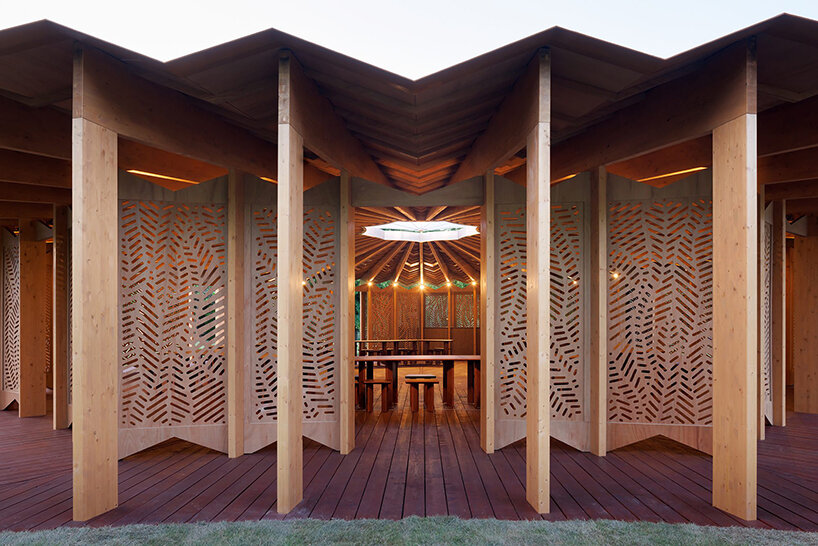
Serpentine Pavilion 2023 designed by Lina Ghotmeh. © Lina Ghotmeh — Architecture. Photo: Iwan Baan, Courtesy: Serpentine.
DB: ‘Considering food as an expression of care, the Pavilion’s design is a space for grounding and reflection on our relationship to land, nature, and environment.’ How is this idea translated into the design?
LG: Having grown up in Lebanon and now living in France, many people ask me, ‘Where do you feel most at home, as you move, live, and work in different places?’ I always thought that food is the place where I feel home. I think food is what draws our relation to our roots, in a way. Suddenly, you are eating and you remember your relationship to Earth, to what it provided, to your geography. We are rooted beings, in a way, and we’re very much linked to what geography is able to bring as food. But that makes us think of ourselves as climate beings. When we move, we start to learn more and diversify and gain complexity in our personalities. Food makes us think of ourselves as beings defined not only by our nationality but also by the climates in which we have been nurtured. This link to food is important for me because it is before architecture even, it’s about us, as humans, and how we are related to Earth, and how architecture can serve as a medium to make one more aware of that.
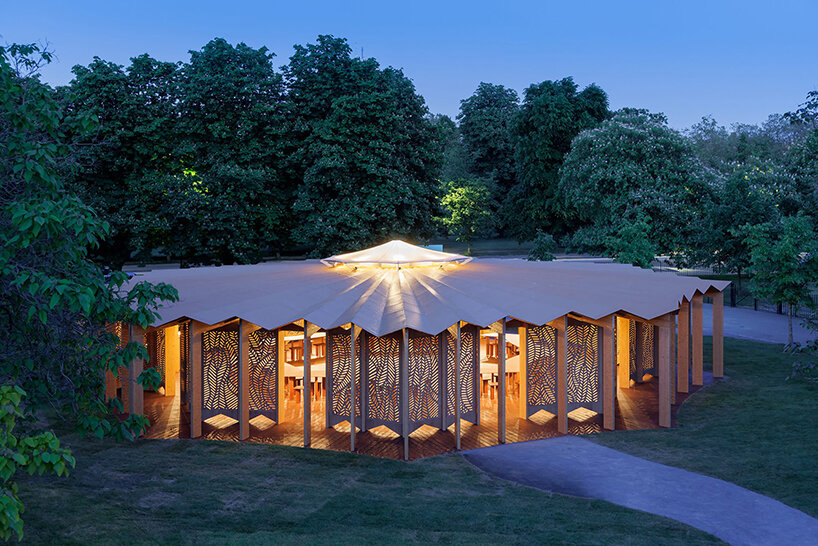
Serpentine Pavilion 2023 designed by Lina Ghotmeh. © Lina Ghotmeh — Architecture. Photo: Iwan Baan, Courtesy: Serpentine.
DB: Can tell us a bit about the two exclusively designed furniture pieces for the Conran shop that will be displayed at the Pavilion?
LG: The concept for this pavilion started with the idea of a table idea as a place of commonality. The design focused on creating a modular structure composed of nine segments, each consisting of three tables. Then, there are the stools. I was so lucky that Conrad accepted to produce these, resulting in a flexible seating arrangement that can be arranged concentrically or in different configurations to accommodate various programs and activities. They’re crafted in wood, all in reddish colors. The flooring and tables are of a dark Bordeaux red color, creating a sense of richness, while the remaining elements retain their natural wood hues, adding a touch of lightness to the roof and columns.
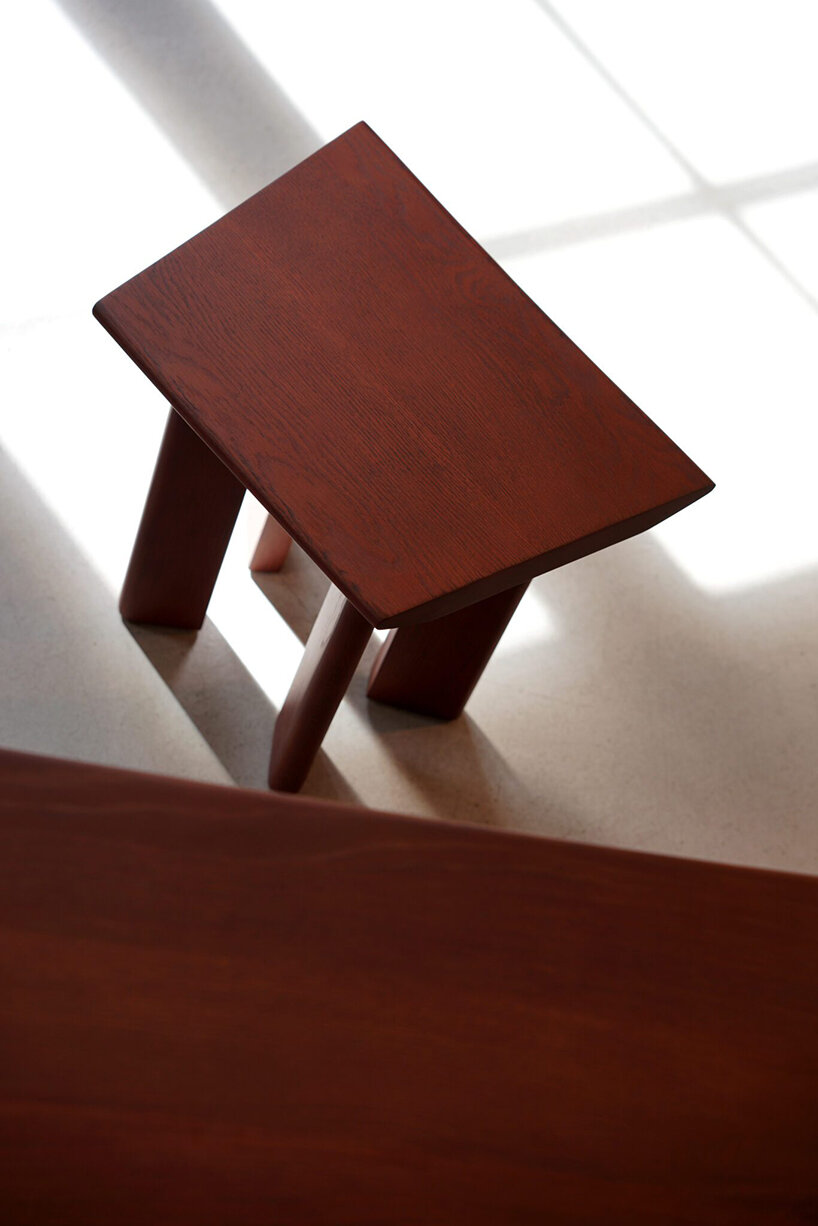
Stool and table for Serpentine Pavilion 2023 © Lina Ghotmeh — Architecture
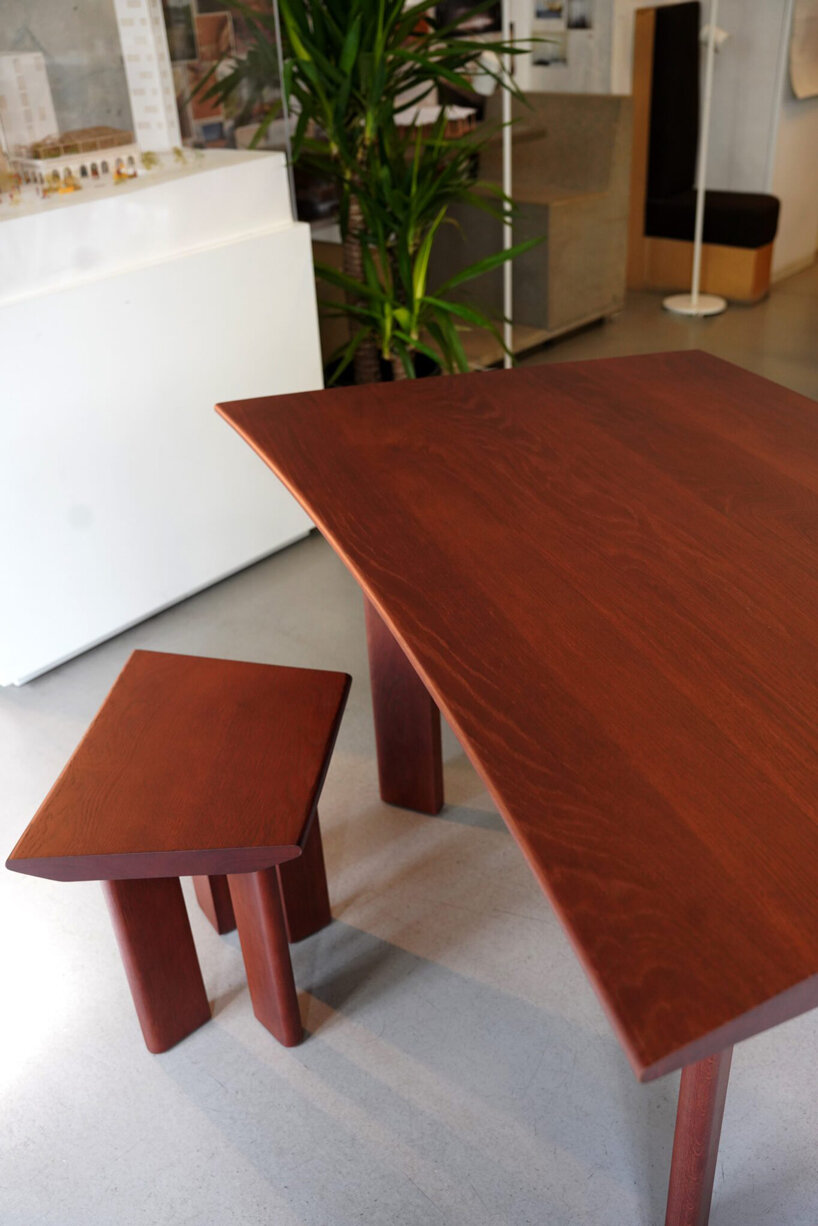
Stool and table for Serpentine Pavilion 2023 © Lina Ghotmeh — Architecture
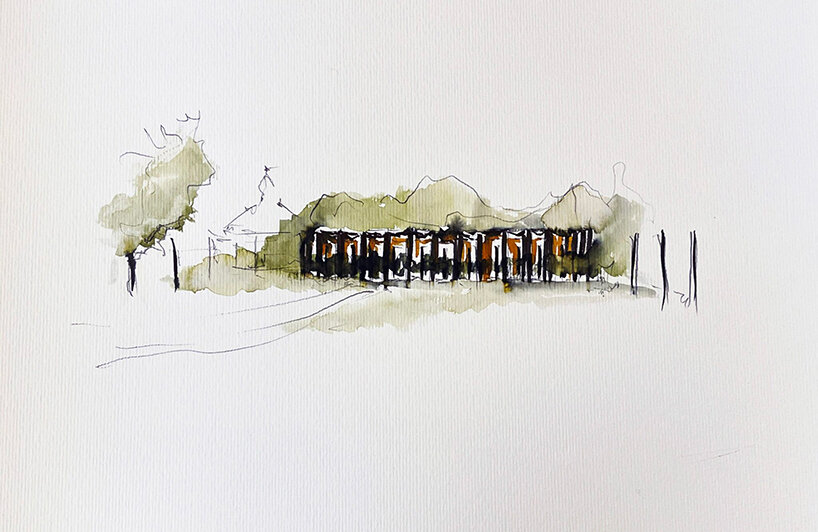
Serpentine Pavilion 2023 designed by Lina Ghotmeh — Architecture Built with Nature Ink, Pencil & Watercolor Sketch by © Lina Ghotmeh, Courtesy: Serpentine
iwan baan (103)
lina ghotmeh (10)
serpentine gallery pavilion (51)
PRODUCT LIBRARY
a diverse digital database that acts as a valuable guide in gaining insight and information about a product directly from the manufacturer, and serves as a rich reference point in developing a project or scheme.
